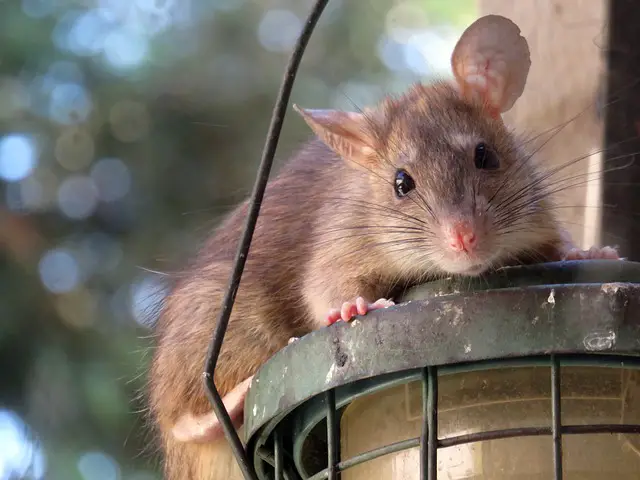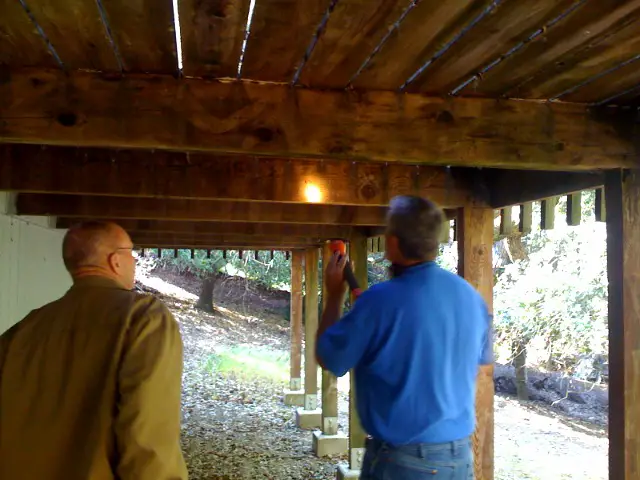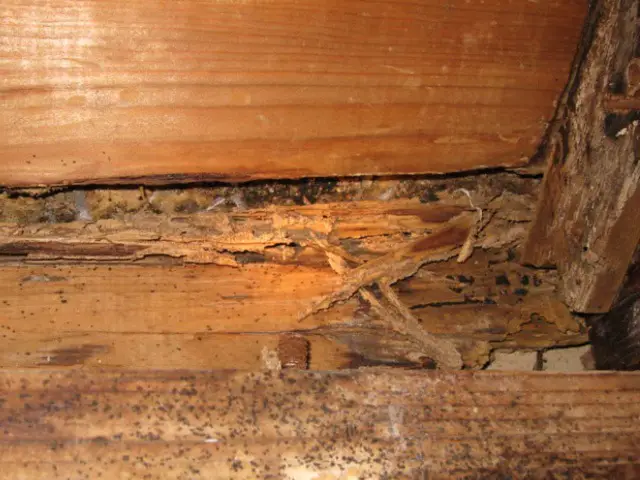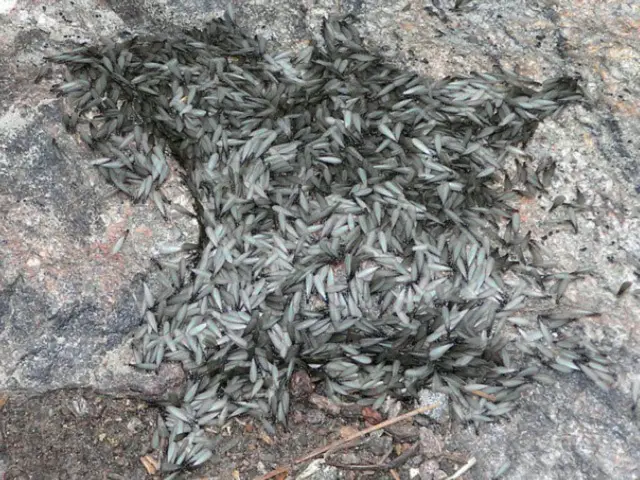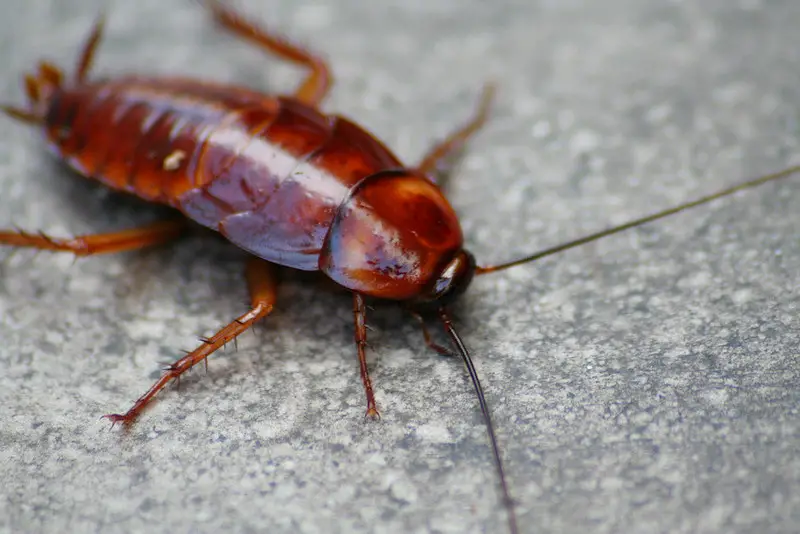Rats are expert climbers. For these pests, climbing is a way to find food, get into hard-to-reach places, and escape from predators. But, the question is: “Can rats climb walls?”
Rats can climb walls. Often, rats get inside your home by climbing walls. They can climb on walls using pipes, cables, wires, ivy, other vegetation, drains, pipes, and rain gutters.
Although smooth walls are impossible for rats to climb. But, rats have no problem climbing brick walls. Therefore, if you live in a home with walls rats can climb, you should ratproof it immediately. It’s the only way to prevent rats from climbing your walls.
How to prevent rats from climbing walls?
Step one in preventing rats from climbing walls is to simply keep them from ever coming in the first place. Yes, rats are tricky, and even the best of us can still attract the unwanted attention of a rodent. Still, by taking some preventative precautions and ridding yourself of the potential lure, your rat issue will be over before it even begins.
Related posts:
- Rat Infestation Treatment
- How To Catch A Rat Without Killing It?
- How to catch a rat in the house fast?
Do rats climb up the outside of houses?
Rats can climb up the outside of houses. They can’t climb glass or very smooth surface walls, but they can easily climb brick walls. Also, if your walls are covered in ivy or other vegetation, rats will climb it without any problems. Cables and wires on the outer walls of buildings help rats climb.
The personified cartoon rodents we see on television are so dangerously cute because they play games, talk, and even save the day. However, real rats are a whole different story; they carry diseases, damage electrical wiring, gnaw through walls and an honest problem in the home.
If eating our food and chewing through our valuables weren’t enough, their potential to carry rodent transmitted diseases, such as rabies and even the plague, should be plenty of reasons to handle the situation right away.
Nevertheless, this task is quite “easier said than done” because catching a rat can be rather complicated and downright disgusting. Most of us don’t even know where to start. Thankfully, we have all the tricks and tips that will help you reclaim your home from the rats.
How high can rats climb?
There is virtually no limit to how high rats can climb. Rats will find a way to climb as high they need to.
Why do rats climb walls?
Rats climb walls to forage for food, find shelter, or escape from predators.
How to stop rats from climbing walls?
Keep Up on Your Household Chores
Pests like warm and cluttered areas because there are lots of little places to hide without being spotted easily. The solution: stay organized! Place storage in your attic and garage by using sealed boxes and tubs to keep critters out. Plastic is better than cardboard boxes because it is inorganic and cannot be chewed through with ease. Also, maintaining regular “house hygiene” is helpful to keep your living spaces clear of any unnecessary clutter and grime that may be attractive to rats. Pests are dirty and enjoy filthy places, so by keeping your home clean, rodents will be relatively unappeased and leave you alone.
Food Handling
Everyone likes to eat, including rats, so keep your food sealed and clean up any crumbs or spills that might attract pests. Never leave open food in the house; rodents have a strong sense of smell and will be able to track down a food source easily, especially if the food is not sealed or stored properly. Always dispose of waste accurately as well. Tie garbage up tightly so it cannot be spilled once it’s outside of your home or in the curbside receptacles or dumpsters. A dirty yard is still an attraction to a rat, so if there is garbage in the driveway or spills in the street, a rat will soon find its way beyond and into the walls.
Fix Holes
Fill holes in your walls that are bigger than ½” for rat prevention (¼” for mice prevention) with copper wire mesh to keep rats from entering your living areas. Copper wire will not rust, it’s lightweight, affordable, easy to install, and most importantly, rats cannot chew through it. However, the best way to seal off an environment from any pest (rodents or bugs) is to completely make it impenetrable. Use plaster, silicon, or concrete Spackle to fill holes entirely, even after the copper wire has been put in place.
Identifying the Rat Problem
However, despite our best efforts of prevention, sometimes a rat still makes an unwanted visit, and we may begin to suspect their presence in the house. Rodents are some of the most inconsiderate houseguests, so spotting a rat problem, thankfully, is rather easy. Some signs that you have a rat may include:
- Sounds of scampering, scrapping or clawing in the attic.
- Chew marks on furniture, clothes, and food products.
- Distinct droppings: most rat feces resemble a raisin in color, shape, and size. It will be dispersed throughout the house and not left in piles or trails.
- Brown, dirty, or greasy pathways where the rat has been running.
- More wild or feral cat activity in the neighborhood than normal.
Rats are a rather shy and “homebound” animal, so seeing the pest out in the open may never happen. Search for these signs within your house if you believe you may have a present rodent problem. When in doubt, it is always best to get a professional opinion and diagnosis, so contact an extermination company or rat control agency for an estimate. Many times it’s free!
Once there has been a verdict of a rat infestation, the next issue to address, of course, is how to rid yourself of the problem.
Thankfully, there are several effective ways to “de-rat” your household, whether you have one pest or a whole colony.
Live Trapping
Live trapping is the best option for those who want to keep the rat alive or have a minor rat problem (1 or 2 rodents).
Unfortunately, live trapping is not the best solution for those who have a serious infestation because the task would be too expensive, dangerous, and probably not as effective. The rats would be able to repopulate as quickly as you could capture them.
However, if you are dealing with just one or two, live trapping is a highly effective and humane way of reclaiming your home.
Most live traps resemble a one-way wire cage that is designed to capture the rodent once it is inside and sets off the trigger. The cage is baited in the center with doors open on either side. When the rat enters and agitates the baited trigger, the doors will close, trapping the rodent inside.
Live trapping is highly safe for the rat because it will be injury-free upon capturing. However, it is important to continuously check your traps at least twice a day for success. Even though the rat may be injury-free upon capture, he may still receive harm via escape attempts, exposure to the environment, or starvation.
After capture, there are two options to get rid of your rodent: set it free or exterminate it.
For wilderness release, it is important to set the rodent-free in an area where it cannot re-enter your living area or anyone else’s nearby. It’s essential to know that not all rat types are legal to be released, so please contact the Animal Welfare Institute about proper ways of wilderness discharge if your rodent applies.
If you desire to “put down” or kill the rodent, make sure you have set up a humane method before capturing the animal. Humane is defined as “reasonably swift and painless” according to the Wild Mammals Protection Act of 1996, so all methods should reflect this manner fully. Methods deemed Humane by the organization are:
- Destruction to the brain by a strong and accurate blow to the head or by shooting
- Lethal overdose of injection or gas
- Drowning
If you are incapable or uncomfortable with performing any of the live or dead “release” methods, please seek professional assistance via an exterminator or rat control company who are fully able to accurately and humanely perform these tasks.
Lethal Trapping Methods
The second option for rat control and containment is lethal trapping through bait, snap traps, and other devices.
These means of control are best for large colonies or families of rats any larger than three individuals because containment is quicker, cheaper, and more effective than live trapping.
Fortunately, there is a wide range of ways to exterminate rats, so if one method is not proving to be effective, try any of the following:
Snap Traps
Snap traps, or spring-loaded traps, are the most traditional mechanism for capturing a rat. Their popularity stems from a combination of being highly effective, humane, and cheap. The trap itself looks like a wooden plank fitted with a toggle trigger and a wire “snap” bar, which will instantly come down onto the rodent, breaking its neck once the animal agitates the trigger. Death is instantaneous if performed correctly; the rodent will not feel anything, thus deeming it a humane extermination treatment.
Piston or Gas Chambers
Piston traps or gas traps are another recommended method in containing your rat problem. Although not as popular, the gas chambers are just as effective and humane as the snap traps, and the upside is that the chamber is sealed, so you have no need to see or touch the deceased rodent. These traps look like small, black cans that lure the rat inside with bait. Once the rodent is inside, the can will seal and either strike the animal on the skull with a piston (piston trap) or suffocate the rat with CO2 gas within seconds (gas trap). Both are deemed humane because they administer death quickly and painlessly.
Poisoned Bait or Rodenticide
Rodenticide is a term used for poisoned food or bait that is used to kill rats upon feeding. This mechanism works by using a number of different active ingredients in the food that block enzyme productions in the body, thus causing major metabolism malfunctions and eventual death. The most active ingredients found in the bait are zinc phosphide, bromethalin, cholecalciferol, and strychnine, which block enzyme production in the liver and cause internal bleeding. Some rodenticides kill within one feeding, and others only work after multiple, so be sure to check your rodenticide label for the active ingredients and compare it to the “Summary of Common Rodenticides” chart found on the National Pesticide Information Center website to see how long your bait should take for full effect.
Professional Help
When in doubt, professional help from a rat control company is best for those who have a detrimental rodent problem in their midst or simply feel uncomfortable handling the situation on their own. These agencies are fully capable of handling any situation, and they will communicate the entire process fully so you will be aware of your situation’s severity and the means of rat elimination. Not to mention, the cleanup and disposal will be taken care of for you as well.
Basic Tricks and Tips for Capture
First, to use a trap properly, track down where the rat travels (indicated by droppings and “grease”) and place up to a dozen traps within the area. Rats are a creature of habit and will walk along the same path without venturing too far beyond its comfort radius, so by placing traps in its walking area, your chances of capturing the rodent are highly more likely. Don’t place the traps too close together or in a place where rats can avoid them.
Bait the trap using a sticky, fragrant, and relatively nonperishable food item to entice the rodent. Most experts recommend dog food pellets, peanut butter or chocolate. Also, in order to get your rodent accustomed to the bait, “feed” the rat your chosen bait prior to setting the trap so that it can trust its food source.
Once set, check the traps at least once daily for capture. If left unattended, the rat will start to decompose and stink up your living area.
STAY AWAY FROM GLUE BOARDS! Although these methods are good at capturing the rodent, they do not kill. These contraptions are excessively inhumane because they allow the rodent to become trapped on the sticky surface but left alive. The rat is therefore left to die via escape attempts or starvation. Death is always painful and terrifying in this situation. We understand your frustration with your rodent problem, but no living being deserves to be subject to such a horrific death. Please do not use glue boards.
Rat Disposal and Cleanup
It is important to note that rodents carry a wide variety of dangerous and even life-threatening diseases and can cause harm even after the rat, itself, is dead. Therefore, it is necessary to take precautions when disposing of the body once captured:
- According to pest control professionals, you should always wear plastic or rubber gloves when handling the body and cleaning the area the rat has previously inhabited.
- Place the body in a separate plastic trash bag and place that bag into a second liner. Seal or tie off the end and place the bags into a garbage receptacle with a closed lid; otherwise, cats will be tempted to harvest the rodent from an open trashcan.
- Use a commercial disinfectant or bleach solution to sterilize traps and the area the rodent has previously inhabited. A good bleach solution contains one gallon of water for every three tablespoons of bleach.
- Wash hands thoroughly with soap and hot water after disposing of the body and disinfecting the area.
No one ever wants to experience a rat infestation firsthand. However, sometimes this event happens to us even though we take every precaution against it. When this happens, hopefully, you now feel fully capable of handling the situation after reading these helpful tips. Regardless, if you have any more unanswered questions or need professional assistance, contact a local pest control company.
